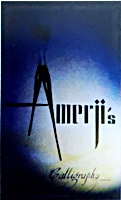|
||||||||
| www.hikmaah.com | ||||||||
|
In a recent article on haptics (the Greek-derived word for the study of touch) in Smithsonian, June, 2000, page 38, MIT's "touch lab" is mentioned. This is a laboratory run by Mandayam Srinivasan that is especially concerned with how the human hand perceives touch. The sensitivity of the human hand is absolutely incredible. Each fingertip of your hand has about 2,000 receptors just for touch. These receptors are so sensitive that they can detect a dot just three microns high. To get a feeling for how small this is, a human hair is more than 50 microns in diameter. If you had a surface that had a rough spot on it that was .000000075 meters high, your finger could detect it. Visible light is slightly less than 10 times smaller than that, so our fingers are not too far away from being able to detect the presence or absence of different colors of light. Trying to understand how all this is possible has gotten researchers into an area so complex that there is still no answer as to how it works. It appears that the fingerprint ridges on the bottom of your outer skin layer act as amplifiers. These ridges are much like the ridges you see when you look at your fingerprint. Not only are there several kinds of nerve receptors that give us the sensation of touch, but there are also receptors for other sensations. Some receptors detect heat and a completely different set of receptors detect cold--both calibrated against normal body temperature so they only work if the temperature goes above or below 98.6°F. There are three kinds of pain receptors-one for mechanical pain, one for thermal pain, and one for chemical pain. There is a separate set of receptors for itch. Some of these sensors sense the stretch of your skin around joints as you move providing information about how your body is moving. These stretches can be understood even with your eyes closed. Srinivasan says "We have no idea how these electrical impulses translate into perceptions and feelings." Trying to explain all of this on the basis of mechanistic chance that favors survival is a difficult task. Many things we use our hands for have nothing to do with survival (like playing a musical instrument or painting a picture or being folded in prayer). Some of the sensory abilities we have might even interfere with survival. A claw might be a better defense against a carnivore than a nerve-filled finger. We would suggest that our sense of touch is another example that we ".are fearfully and wonderfully made. Marvelous are thy works and that my soul knoweth right well" (Psalm 139:14).
|
||||||||
| Asgar Fakhruddin | asgarubi@gmail.com |









